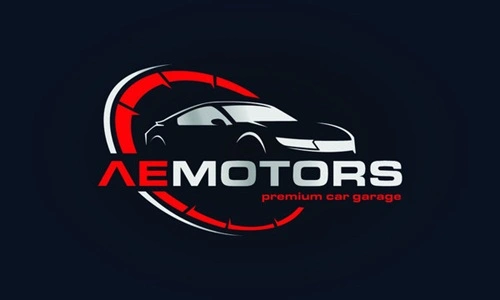India remains the world’s third-largest automobile market, but FY 2025–26 has shown signs of cooling. After three consecutive years of double-digit growth, overall car sales rose just 2% in FY 2024‑25—one of the slowest in recent history, weighed down by stagnant urban demand and cost pressures . In Q1 FY26, total auto sales dropped 5.1% YoY, with passenger vehicles down 1.4%, two‑wheelers down 6.2%, while utility vehicles and exports provided modest support. Amid this, electric vehicles (EVs) are gaining traction: EV penetration reached around 2.5–4.4% in mid‑2025, expected to exceed 7% by FY28, driven by new model launches and policy support.

Strengths
1. Scale & Diverse Product Segment: India’s auto industry is highly diverse—ranging from two‑wheelers and three‑wheelers to passenger vehicles, utility vehicles, and commercial vehicles. Market leaders like Maruti, Tata Motors, Hero, Bajaj, and Mahindra deliver scale and favorable cost structures.
2. Export Robustness: Despite weak domestic demand, automobile exports reached a record 2.04 lakh units in Q1 FY26 (+13.2% YoY), led by demand from Latin America, Middle East, and Japan.
3. Government Policy Support: Incentive programmes like FAME‑II/III, PLI for EV batteries, and customs duty exemptions (down to 15% for EVs under certain conditions) are catalyzing investment, manufacturing localization, and innovation.
4. EV Adoption Momentum: EV sales in FY 25 crossed 20 lakh units, with two‑wheelers commanding over 50% and three‑wheelers nearly 60% of sales in EV categories. Passenger electric vehicles grew ~11% YoY, capturing ~2.5% of total PV sales.
5. Rising EV Model Pipeline: Mass-market EV launches—including Maruti’s e‑Vitara, Hyundai’s Creta EV, Mahindra’s BE6 and XEV 9e, MG’s M9/Windsor, Tata’s Nexon.ev—are expected to double EV volumes in 2025.
Weaknesses
1. Demand Slowdown & Consumer Caution: Urban demand has weakened as wage growth lags and discretionary spending stalls. Car sales to dealers fell 7.4% YoY in June 2025, with quarter sales down 1.4% and 13% QoQ decline from March quarter.
2. EVs Still Niche: Despite growth, EVs accounted for less than 3% of car sales in FY 25, making widespread adoption still nascent . High upfront costs and limited charging infrastructure constrain uptake.
3. Supply Chain Vulnerabilities: Shortages in rare-earth elements and semiconductors have disrupted production timelines and increased costs.
4. Competition & Pricing Pressures: Entry of new models and global players (e.g., MG via JSW JV, Tesla’s high‑end entry) may intensify competition. Tesla India launched Model Y in Mumbai, but at lofty prices due to ~70% import duties—with EVs still less than 2% of PV market.
Opportunities
1. SUV & Utility Vehicle Growth: Utility vehicles saw a 3.8% YoY growth in Q1 FY26, forming 66% of PV sales. SUVs remain a high-margin engine and are expected to drive volume recovery.
2. EV Penetration Upside: Four-wheeler EV penetration is projected to cross 7% by FY 28 if rare-earth and infrastructure constraints ease. Passenger EV production may reach ~301k units in 2025—a 140% YoY jump.
3. Localization of EV Ecosystem: PLI schemes and battery manufacturing incentives can reduce dependence on imports as localization improves from current 30–40% to higher levels in coming years.
4. Infrastructure & Financing Growth: Expansion of charging infrastructure, battery swapping pilots, EV financing, and leasing models will unlock consumer access and segment adoption .
5. Technology & Mobility Services: Connected vehicle tech, mobility-as-a-service, and fleet EVs in ride-sharing and logistics provide additional growth levers.
Threats
1. Macroeconomic & Regulatory Risks: Slower economic growth, rising interest rates, or policy reversals on EV incentives could markedly slow demand.
2. Import Dependency & Trade Risks: Reliance on imported rare-earths and semiconductors means policy changes or geopolitical disruptions could constrain output and inflate costs.
3. Intensifying Competition from Imports: Tariff reductions or new entrants like Tesla (high-end), VinFast, BYD, and MG (JSW) heighten pressure on domestic players .
4. Technology Transition Challenges: Localized EV component ecosystems remain underdeveloped; delays in charging infrastructure and grid upgrades may deter adoption.
5. Consumer Behavior Shifts: Growing environmental awareness may shift preferences to shared mobility or public transport, especially if economic headwinds persist.
Future Outlook
Modest Recovery with Festive Season & Rate Cuts: Industry sentiment points to 1–2% growth in FY 26. If festive season demand and softer financing rates arrive, utility vehicle and SUV sales may help stabilize growth.
EV Penetration to Accelerate: With localization, policy clarity (FAME‑III), and infrastructure support, EV share in passenger vehicles could cross 7% by FY 28. Adoption will be driven by new affordable models and improved cost economics.
Export & OEM Growth Trajectory: Exports are likely to expand further—automakers are looking beyond India to Latin America, Middle East, and ASEAN markets. Domestic OEMs (e.g., Tata, Mahindra, JSW‑MG) may leverage global reach for scale.
Infrastructure & Localization Gains: Expansion of battery assembly and rare-earth processing will reduce import dependency and improve margins.
Digital & Mobility Ecosystems: OEMs may pivot to subscription services, connected services, and after-sales ecosystems to diversify revenue.
Survival of Agile Innovators: Companies that quickly adapt to EV shifts, cost pressures, and localization demands will outperform; slow movers risk losing market relevance.
India’s automobile industry is navigating a pivotal transition: slowing traditional growth, mounting EV push, and heightened export focus. To succeed, stakeholders must manage cyclical slowdown, capitalize on policy‑driven EV momentum, localize supply chains, and differentiate through innovation. The next 3–5 years will critically shape India’s ambition to evolve from mass auto market to EV-led mobility powerhouse.